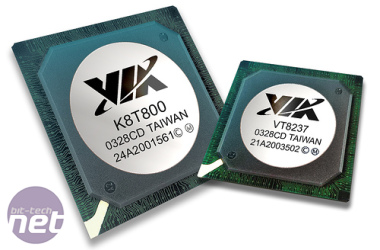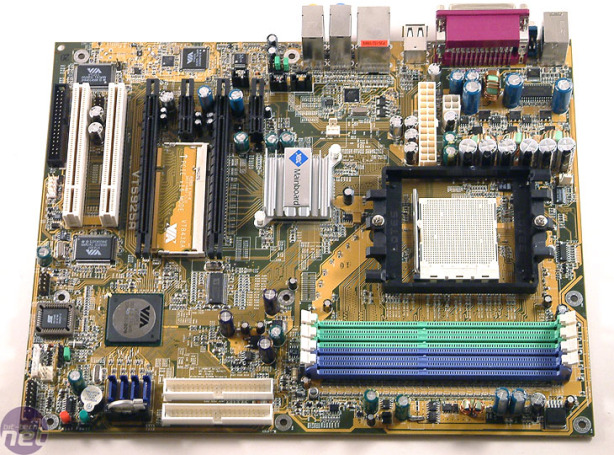What happened to VIA? Tablets, platforms and x86 v ARM
August 10, 2010 | 08:40

We interview VIA: Everything past, present and future
We've wondered for a while what the hell happened to VIA. In some respects, it's the company that could have had it all, moving away from chipsets in the mid 2000s, VIA gained experience with small, low power computer hardware thanks to its EPIA mini-ITX boards and Nano CPUs. Indeed, it remains the only company with a licence for designing and produce both x86 and ARM CPUs.Yet VIA remains a name dimly remembered in Europe and the US - if it's even remembered at all - we wrote a grand total of three news stories about them in 2009, and just one in 2010. Where did it all go wrong? Or did it go wrong?
VIA was one of the revelations of Computex 2010, with the company displaying a keen grasp of the way the rise of ARM, tablets, mobile computing and China will change tech. We were determined to catch up with VIA after Computex, and we recently sat down with three of its executives: Richard Brown, CPU Platform-Sales and Marketing VP, Tim Brown (no relation), CPU Platform-Sales and Marketing Director, and Stewart Haston, Marketing Specialist in International Marketing at VIA.
 This is the story of a company that turned its back on the performance PC space and now can make a good argument to have flanked established competitors large and small such as Nvidia and AMD. .
This is the story of a company that turned its back on the performance PC space and now can make a good argument to have flanked established competitors large and small such as Nvidia and AMD. .bit-tech: Going back a bit a few years, why did you guys run out of steam in the chipset business - it kind of just dissolved about 2004?
VIA: A couple of reasons – even though we were doing very well in the chipset business, we realised it was about platforms, not just chipsets. We were very strong in chipsets during the Pentium 3-era, with PC133 [SDRAM] and DDR boards, and with AMD because we were the only alternative chipset supplier, but during time of transition to Pentium 4 we had various… disagreements with Intel, and that [involved] legal action on both sides which slowed us down quite drastically.
We did have a license for a while to make Intel compatible chipsets but then that finished. And then for a long time we did AMD chipsets too but now it’s pushing its own chipsets to develop its own platform further, just like we’re making chipsets for our own CPUs. If you look the last few years across the industry, whether it’s us, AMD or Intel it’s all about the whole platform: chipset plus CPU. That’s the natural development of the industry.
BT: Previously you used to use the Intel front side bus for your CPUs and then developed your own C4 bus – is that now a completely separate technology?
VIA: Yes.
BT: Could Nvidia use your bus to tie into its own chipsets?
VIA: We were talking with Nvidia for a while about it and they would have to design a chipset to interface with our bus technology – it’s entirely [up to] them but we’re pretty open to it – we don’t close our products like other companies do. However what our customers say to us is that they want the complete VIA package.
BT: Why does no one else apart from VIA make Pico-ITX products?
VIA: The problem with Pico-ITX is the availability of cases, so that's why with our Pico-ITX products we've put it all together - you get the kit: the daughterboards, the chassis and the PSU. It's all together in one package to try and make it easier.
BT: Did you ever consider doing an online store then?
VIA: We do! Unfortunately for you guys it's US only right now. We'll hopefully be rolling it out to Europe and Japan as well. It's just a matter of time.

A VIA mobo from back in the day
BT: Why is it that companies don't take up your CPUs and mini-ITX platform? The Asus Eee Box, for example, would be perfect for that a VIA CPU.
VIA: That’s for Asus to decide, and we talk with Asus as well as other different customers, and for whatever reason there they decided to go for Intel or AMD. Most of our customers work with us in the thin client space where we see demand is very strong, it’s just the mainstream consumer markets where we don’t have as much interest.
BT: Is it a problem with Intel's Marketing Fund and those incentives?
VIA: We have to be very careful what we say about that. Obviously Intel has a very strong brand name and it has different points of leverage over its customers-
BT: Money?
VIA: Ha! I didn’t say that – it has multiple points of leverage – which does make it quite tough for us, and it also has some decent products there’s no doubt about that.
BT: As the only company apart from AMD and Intel with x86 a license, that makes your IP extremely valuable - ever thought of selling it?
VIA: There were many rumours a few years ago about companies interested in buying VIA or its x86 license, but we’re very focused on building our own products and our market so I don’t really see that ever happening. We’ve been in x86 for over 10 years and we’ve made a lot of investment over that time. With [current VIA x86 CPU] the Nano now we have a very good part, and we’ll have dual-core by the end of the year or early next year, which gives us a solid roadmap along with new opportunities that are continuing to open up.

MSI MPG Velox 100R Chassis Review
October 14 2021 | 15:04








Want to comment? Please log in.